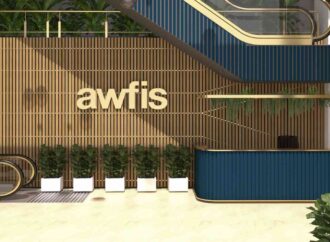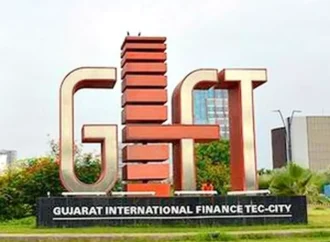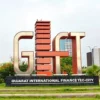Master the art of conducting successful meetings with our 19 essential tips. From meticulous planning to leveraging coworking spaces, learn how to set the right tone, engage participants, and ensure productivity. Elevate your professional image and make every meeting count with our comprehensive guide.
Meetings are a crucial aspect of business communication. Mastering the art of conducting a successful meeting can significantly enhance your professional image and effectiveness. In today’s world, where first impressions and every interaction can influence your career trajectory, knowing how to conduct a productive and impressive meeting is vital.
Whether it’s a casual check-in or a high-stakes deal discussion, the ability to facilitate a productive and memorable meeting is essential. This blog will explore successfull meeting tips for ensuring smooth meetings.
From setting the right tone to leveraging the best coworking spaces, we will cover everything you need to make every meeting count.
Pre-Meeting Tips
- Pre-Meeting Planning
Preparation is the foundation of any successful meeting tip. This includes defining the meeting’s purpose, creating a clear agenda, and distributing it in advance to all participants. Ensure you are well-versed with the topics to be discussed and anticipate possible questions and challenges that could arise. Preparation also involves logistical aspects such as choosing an ideal location, which could be a well-equipped coworking space that fosters a professional atmosphere.
- Research and Rehearsal
Spend time researching the attendees and their business contexts. Understanding their goals, pain points, and backgrounds can help you tailor your approach to resonate more effectively. Additionally, if you are presenting, rehearse your parts thoroughly. Familiarity with your content boosts confidence and smoothens delivery, making the meeting more impactful.
- Choosing the Right Venue
The setting where you hold your meeting can significantly impact its success. Coworking spaces offer diverse and dynamic environments that can be customised to match the specific tone and style of your meeting. Whether you require a meeting room, formal boardroom or a more casual lounge area, these spaces can accommodate your needs and provide the appropriate atmosphere.
- Ensuring Technological Compatibility
In today’s digital age, ensuring that all technological tools are in place and working is crucial. This includes projectors, WiFi connections, and teleconferencing equipment. A technical glitch can disrupt the flow of a meeting and diminish its professionalism. Always check these aspects in advance, especially when using shared office spaces meeting rooms.
- Active Listening and Participation
Engagement is not just about speaking but also about listening. Show your attentiveness by engaging with others’ points, asking insightful questions, and offering constructive feedback. This fosters a collaborative atmosphere and encourages open communication.
- Clear and Concise Communication
When you speak, be clear and concise. Use jargon only if all attendees commonly understand it. Effective communication is about ensuring your message is understood, not just heard. If necessary, use visual aids to help underline your points and keep the audience engaged.
- Summarising Key Points
At the end of the meeting, summarise the main points discussed and any decisions made. This clarifies any potential misunderstandings and reinforces the session’s productivity.
- Digital Tools for Enhanced Productivity
Utilise project management tools and digital platforms to keep track of tasks and progress. Tools like Asana, Notion, or Trello can help organise post-meeting actions and maintain visibility among team members, enhancing overall productivity and follow-through.
- Innovative Solutions for Remote Participation
For remote attendees, ensure that the meeting is accessible via reliable teleconferencing software. Tools like Zoom, Google Meet, or Microsoft Teams can help integrate remote participants seamlessly, effectively including everyone, regardless of location.
- Balancing Voices
Ensure that everyone has an opportunity to contribute to any meeting. Actively manage the dynamics by inviting quieter members to share their thoughts while diplomatically keeping more dominant personalities from overtaking the discussion. This balance promotes a more inclusive environment where all perspectives are valued, enhancing the richness of the discussion and decision-making process.
- Handling Conflict
Differences in opinion can lead to conflict, which is beneficial if handled correctly. Approach conflicts with a goal of resolution and understanding rather than dominance. Use neutral language, encourage sharing of perspectives, and strive to find common ground or compromise that respects all parties’ viewpoints.
- Interactive Elements
Keep participants engaged by incorporating interactive elements into your meetings. This could be through brainstorming sessions, polls, or breakout groups that allow for more intensive discussions among smaller teams. Interactive elements make meetings more dynamic and enhance creativity and involvement.
- Feedback Mechanisms
End meetings with a request for feedback on the session’s effectiveness and suggestions for improvement. This shows your commitment to enhancing the meeting experience and helps tailor future meetings to meet the group’s needs better.
- Timing Is Everything
Schedule meetings when participants are most likely to be alert and engaged. Avoid early mornings, right after lunch, or late when energy levels might wane. If participants are in different time zones, consider a time that offers the most reasonable compromise.
- Respecting Time
Start and end your meetings on time. Respecting participants’ time not only sets a professional tone but also imposes a discipline that ensures efficiency. Limit meetings to the necessary duration without overextending, which can lead to diminished focus and productivity.
- Language Considerations
If you’re hosting international participants, consider the need for language support. Providing translation services or conducting the meeting in a commonly understood language can prevent miscommunication and enhance collaborative efforts.
Post-Meeting Tips
- Prompt Follow-Up
Send a follow-up email within 24 hours, thanking participants for their time and outlining any agreed-upon next steps. This shows professionalism, keeps the momentum going, and ensures accountability.
- Leverage Analytics
Use tools to gather data on meeting engagement, such as participation rates, time spent on various topics, and the effectiveness of communication channels. Analytics can provide insights into what works well and needs improvement, helping refine future meetings.
- Continuous Improvement
Incorporate insights from analytics and feedback into your meeting planning process. Continuous improvement helps craft more effective meetings, keeping them relevant and productive as your team or business evolves.
Bottom Line
Meetings are a routine formality and a strategic tool that can drive businesses forward and create lasting relationships. By meticulously preparing, selecting the right environment, engaging effectively, and following up diligently, you can ensure that your meetings leave a positive and lasting impression.
For more valuable insights on enhancing your work and workspace, remember to follow Qdesq. Stay updated with us to transform your professional interactions and discover the full potential of modern workspaces.























